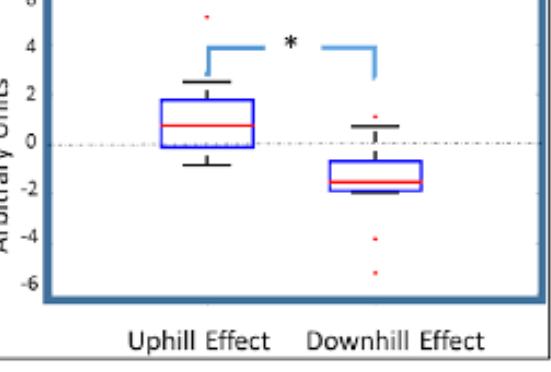Gait adaptation to conflictive visual flow in virtual environments
PubDate: August 2017
Teams: Sheba Medical Center;Tel Aviv University
Writers: Desiderio Cano Porras; Meir Plotnik; Rivka Inzelberg; Gabriel Zeilig
PDF: Gait adaptation to conflictive visual flow in virtual environments

Abstract
The interaction between visual perception and proprioception is essential during locomotion. Manipulating visual flow and surface inclination facilitates the investigation of the mechanisms underlying this sensorimotor integration. Some studies suggest that visual flow leads to adjustment of postural control and modulates walking speed on inclined surfaces. However, this interaction must be better elucidated before it can be applied to improve gait in a clinical rehabilitation context. The aim of this study is to evaluate gait adaptation in healthy adults exposed to conflictive visual flow depicting inclined surfaces during level walking. Eighteen healthy participants (nine male; age: 29±4 years; BMI: 23.2±3.2 kg/m 2 ) walked on a level treadmill (in self-paced mode) synchronized to a motion capture system. Simultaneously, a fully immersive virtual reality system projected a virtual environment depicting a one-lane road on a full-room dome-shaped screen. This paper reports on three walking conditions (out of nine randomly presented): [1]: level visual flow, [2]: visual flow switches to uphill (+10°), and [3]: visual flow switches to downhill (-10°). In conditions 2 & 3, visual flow changed when the participant reached steady-state velocity, and the new visual flow lasted for 70 seconds. We compared walking during non-conflicting level visual flow with the other conditions and characterized the temporal pattern of the visual conflict effect. In addition, we evaluated changes in spatiotemporal parameters (step and stride length) as well as joint angles (knee, elbow and pelvis) during the course of the effect. Conflictive visual flow significantly influenced gait. Walking speed increased in uphill (p=0.038) and decreased in downhill (p=0.002) visual conflictive conditions, as compared to the level condition. Further, walking speed differed between the uphill and downhill visual conflict conditions (p=0.001). An early-stage effect peaked at 10.7 and 9.9 seconds, and returned to baseline at 23.8 and 20.7 seconds, respectively, after onset of visual conflict. Range of motion in the assessed joint angles increased during the effect (p<;0.05) for both conflicting conditions. Spatiotemporal gait parameters showed that conflictive uphill scenery led to an increase in step and stride length, as well as decreased stance time. Furthermore, these parameters were significantly different during the course of the effect for uphill versus downhill visual conflict (p<;0.05). Our results suggest that young adults show gait adaptations under conflictive sensory conditions. A key finding is that these adaptations appear to differ depending upon the type of incongruence in visual flow. A transition in the virtual environment presenting conflictive visual scenes with uphill and downhill surfaces differentially affected walking speed, range of joint motion, and walking pattern. These adaptations seem to be consistent with the anticipated behavior of transitioning to walking uphill or downhill. Our results further support that the manipulation of visual-proprioceptive integration is able to modulate gait. The paradigm utilized in this study may be incorporated in the development of clinical-oriented virtual environments aiming to enhance gait rehabilitation programs.

